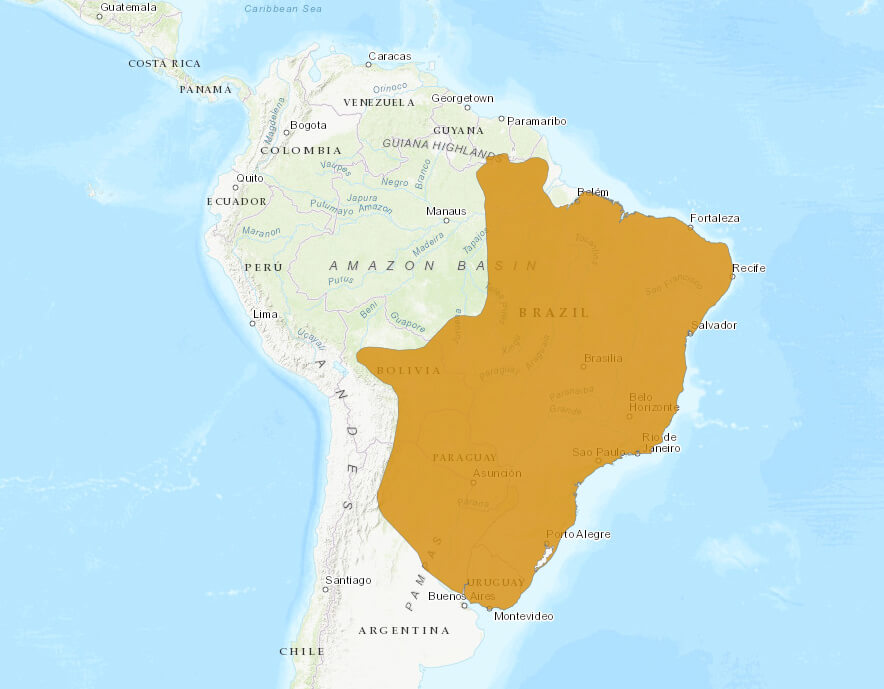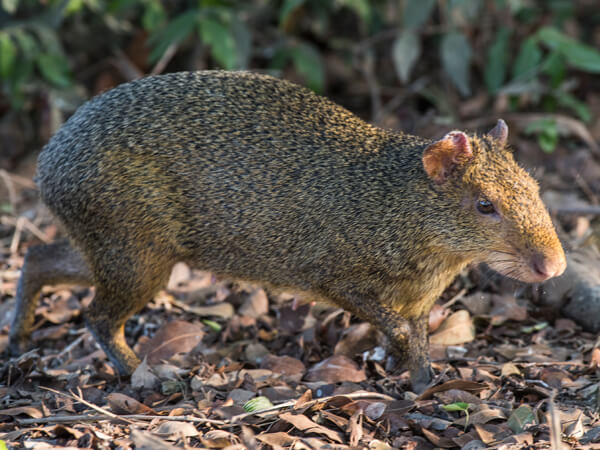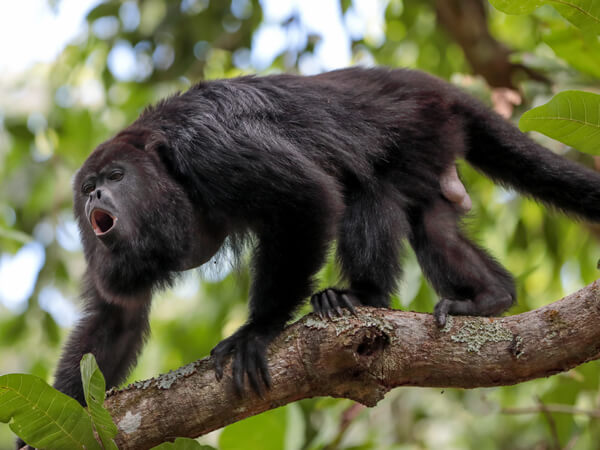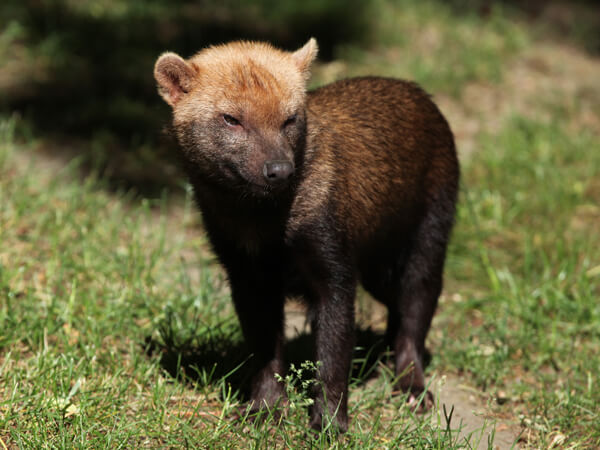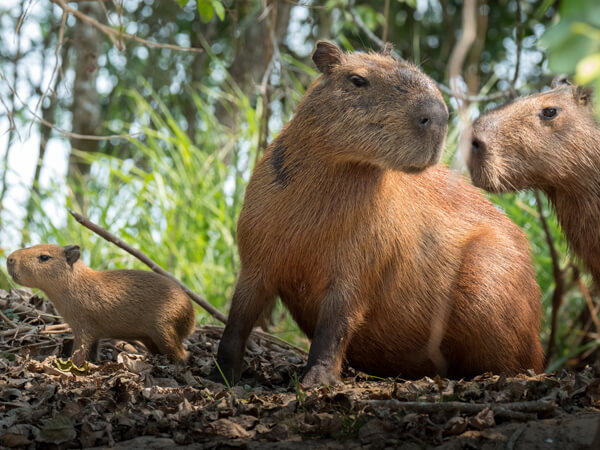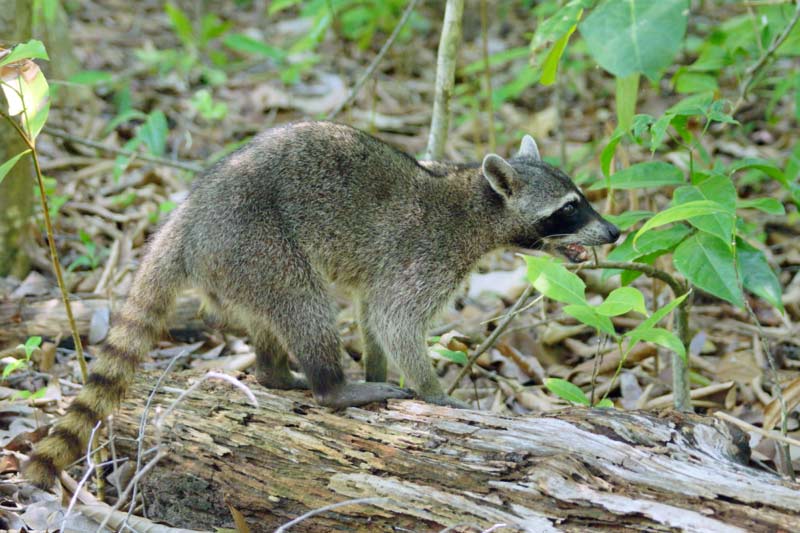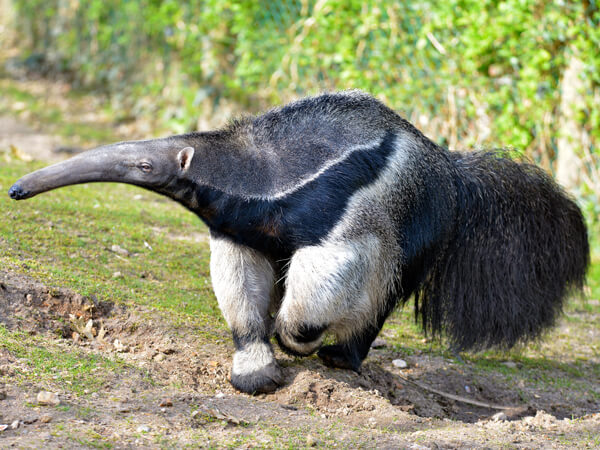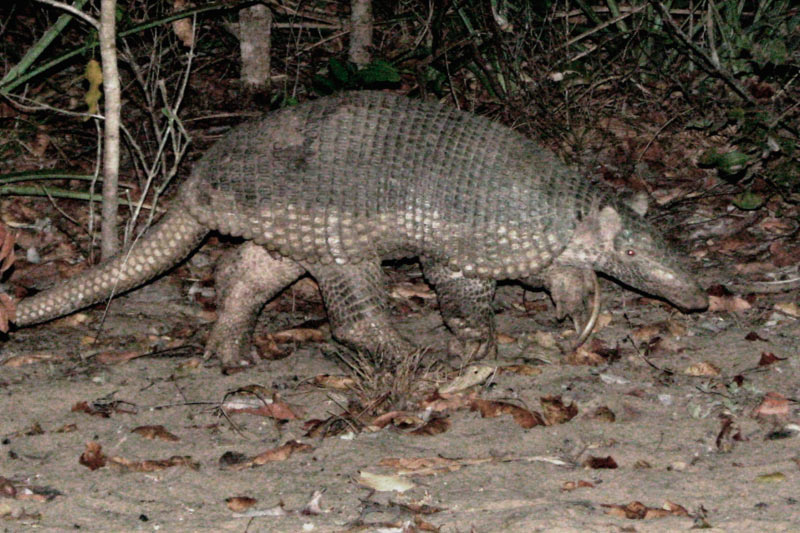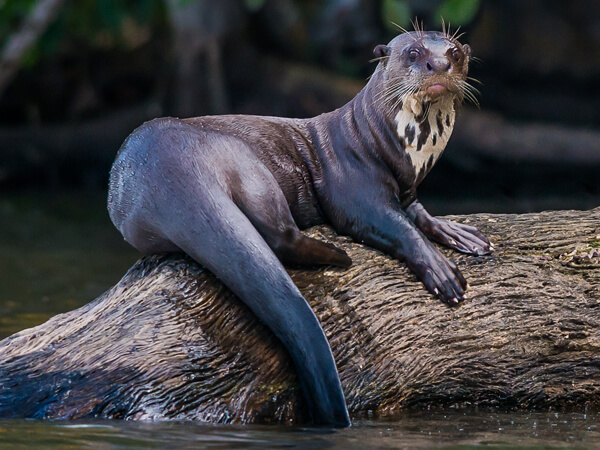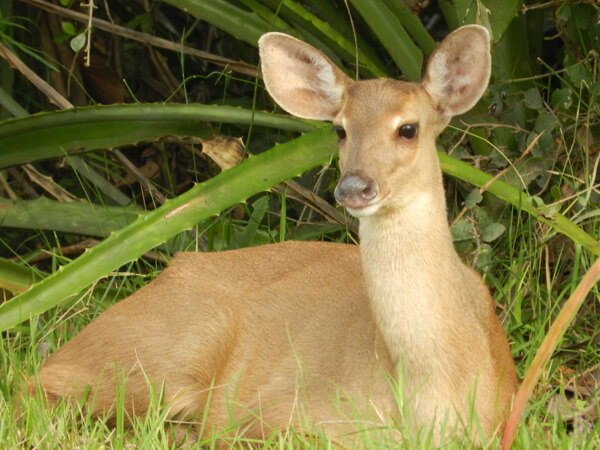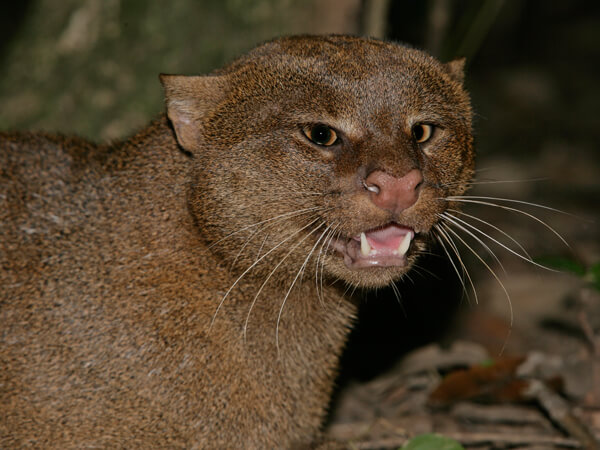The Tatu'pewa name comes from the Tupi and means "fat and flat trunk" with reference to their bodily features. One of the common names of this species in Portuguese, “tatu-papa-defunto”, meaning “corpse-eating-armadillo”, which comes from the popular belief that the species feeds on corpses.
Click to learn more
Distribution
The six-banded armadillo is found in eastern Bolivia, Paraguay, Argentina and Brazil. In Brazil, it is present in the Pantanal, in the Pampas, Atlantic Forest, Cerrado, Caatinga and the eastern portion of the Amazon.
Features
The six-banded armadillo measures approximately 40 centimeters in body length, with a tail ranging from 11 to 24 centimeters. It weighs between 3.6 and 6.5 kilograms. A yellowish-brown shell, incorporating six to eight movable bands with long, whitish hair between the bands, covers the body. The head is cone-shaped, flattened at the top. The six-banded armadillo has poor vision but an excellent sense of smell. Within the shell, above the tail,e situated between two and four glands that release a substance with a typical odor, used both to demarcate territories (burrows) and to attract sexual partners.
Behavior
The six-banded armadillo is a species of diurnal habits, but may also be active nocturnally at times. Lifestyle is mostly solitary, but they can be seen in small groups during the breeding season or when feeding on large carcasses. The six-banded armadillo also has semi-fossorial habits, and digs several holes in open fields to serve as dens. The holes have an average depth of 1.5 meters, with a “u” shape at the bottom, allowing the animal enough space to turn around while in the hole.
Food
The six-banded armadillo is omnivorous, feeding on fruits, insects, small reptiles, amphibians, rodents, and occasionally on carrion.
Reproduction
The gestation period lasts about 60 days, after which females give birth to between one and three cubs in their den, which they often build themselves. In general, the cubs open their eyes after 20 days of life.
Conservation
The six-banded armadillo has been listed as “least concern” by both the national list of ICMBio and by the IUCN. It is an animal predominantly hunted for its meat.

